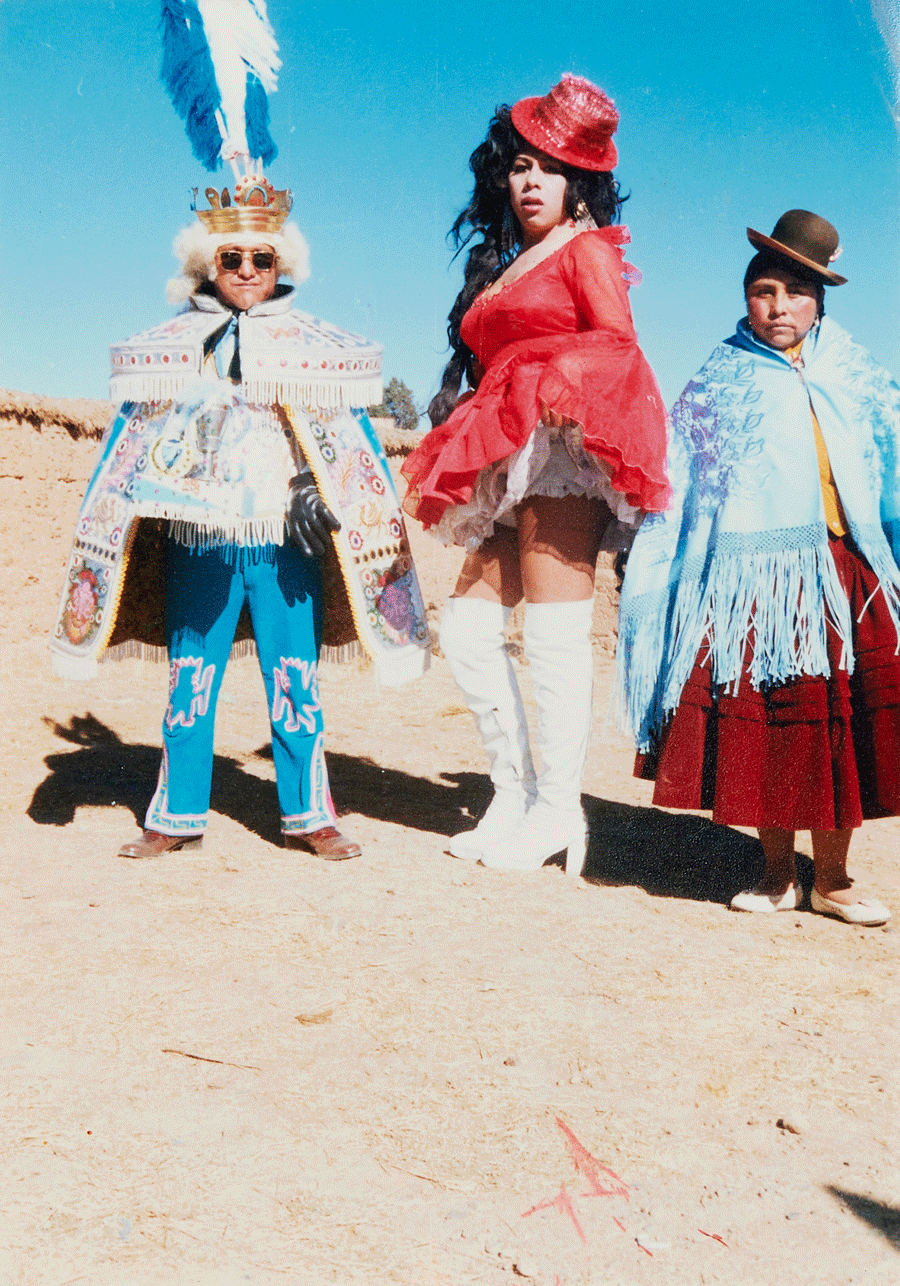The Five Best Shows to See in the UK
From an exhibition of Kaye Donachie’s chalky blue, purple and grey portraits to David Aruquipa Pérez’s photographic archive of Bolivian carnival culture
From an exhibition of Kaye Donachie’s chalky blue, purple and grey portraits to David Aruquipa Pérez’s photographic archive of Bolivian carnival culture

Kaye Donachie
Pallant House Gallery, Chichester
13 May – 08 October

Typically celebrated for their impact on artists, muses are often recognized for their physical appearance above all else. However, Kaye Donachie’s serene paintings of historical female protagonists reimagine the concept of the muse, with the artist aspiring less to an exact likeness than to a creative essence, often inspired by a single line of her subject’s writing. – Emily Steer
Carey Young
Modern Art Oxford
25 March – 02 July

Carey Young has a long-standing engagement with the choreographies of the law and our position as its subjects. In ‘Appearance’, she documents a world in which female authority wholly controls and enacts judicial disciplines. Palais de Justice (2017) is a film shot in Brussels’s colossal courthouse where Young surreptitiously captured footage over two years, documenting the presence of women at work in the legal system through the female gaze. – Cathy Wade
David Aruquipa Pérez
Auto Italia, London
14 April – 11 June

The photographic archive of David Aruquipa Pérez traces subaltern genealogies of queer and travesti expression, and anti-authoritarian resistance, across the Andes. His practice is one of cultural preservation, which documents the centrality of gender-non-conforming peoples to Bolivian carnival culture, in particular, and celebrates the act of public assembly as an evergreen mode of queer refusal. ‘Barbarella’s Kiss’, a survey exhibition overseen by artist-curator Aitor González Valencia, arrived in London this spring to vivify this archive. – Dylan Huw
Sarah Sze
Peckham Rye Station, London
19 May – 17 September

People often create a false dichotomy in their minds between the online world, which they perceive as non-physical, and ‘real life’, which they deem physical. But the digital is also physical: it’s light and pixels; it’s a screen; it’s tactile and sensory. I like to question what each medium does well. For me, the digital has an incredible power to communicate longing. You always want more. This is something that the structure of the internet has capitalized on. – Sarah Sze
Hurvin Anderson
Hepworth Wakefield
26 May – 5 November

I see Hopper in a lot in Hurvin Anderson’s paintings, going back to Ball Watching and the series you made of barber shops [2007–09]. I would also say someone like Sigmar Polke has been an influence – in terms of both the spirit of your work and your use of material. But people always pick up on the obvious correlations, like the photograph or the figuration. – Peter Doig
Main image: Carey Young, Appearance, 2023, film still. Courtesy: the artist and Modern Art Oxford






















